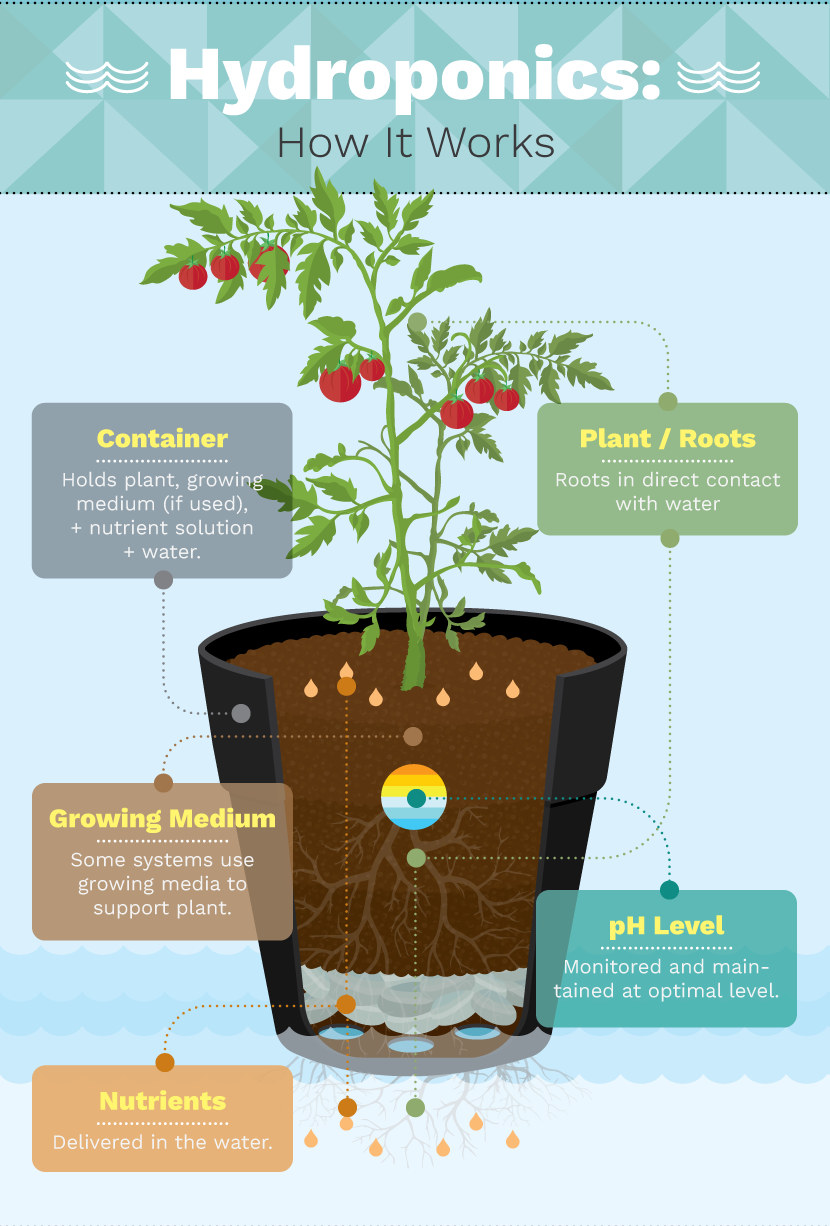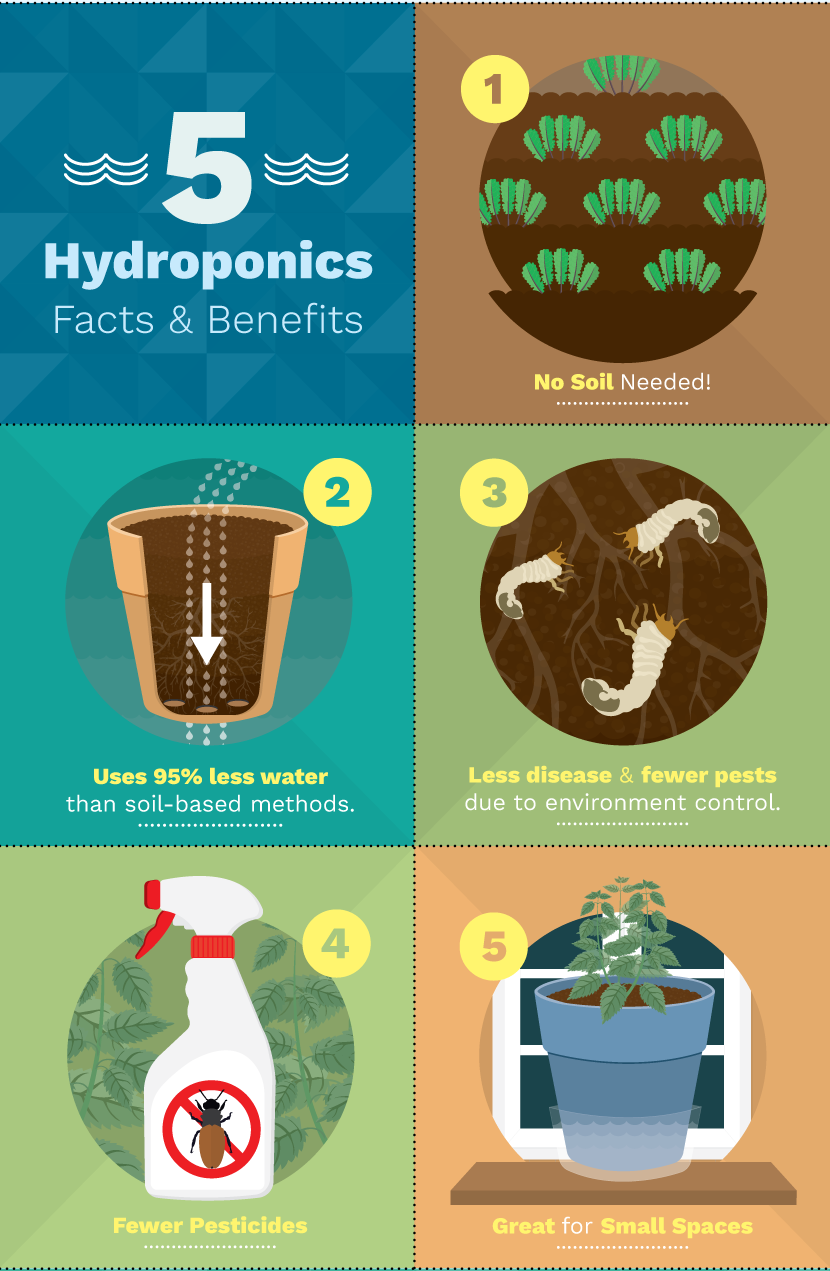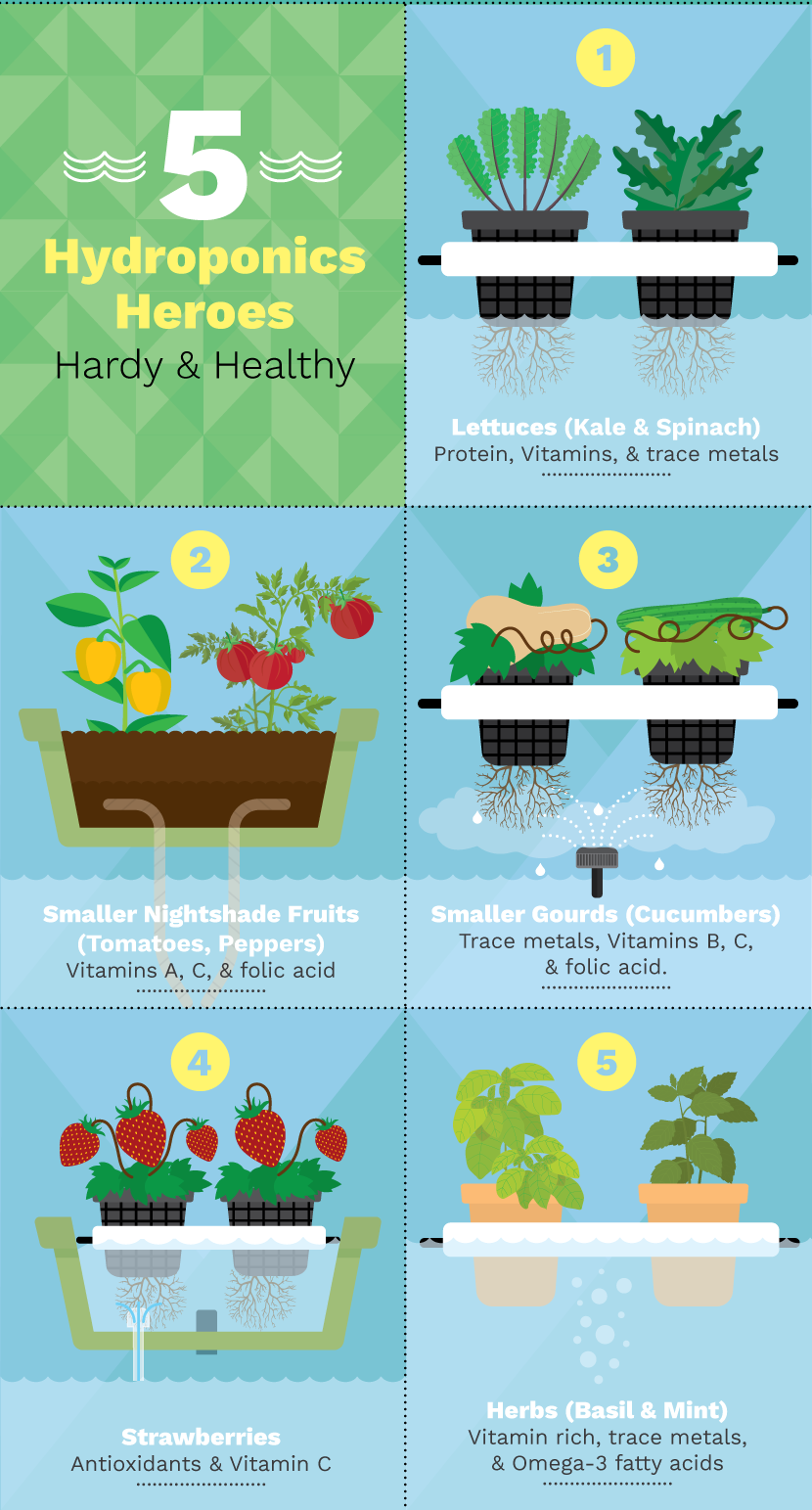How To Become More Self-Sufficient Without Starting a Full-Blown Farm…
Want to start preserving your harvest, making your own soap, or building a backyard root cellar — but not sure where to begin? “Homesteading Advice” gives you instant lifetime access to 35+ practical homesteading books on food preservation, veggie gardening, DIY natural cleaning products (save over $250 per year with this skill alone), brewing, off-grid energy, and a whole lot more…
Click Here To Check It Out Now!
Hydroponics is a form of agriculture where plant roots grow, not in soil, but in nutrient-enriched water. It’s a great method for growing food indoors and in small spaces. With the addition of automatic controls, it can be nearly maintenance-free.
Hydroponic Historical Roots
Hydroponic gardening has roots in ancient history, possibly as far back as the first century in ancient Rome, when Emperor Tiberius wanted cucumbers grown year-round at his palace. In 600 B.C., gardeners at the Hanging Gardens of Babylon – one of the seven wonders of the ancient world – may have employed hydroponic principles. Further south, in the 10th and 11th centuries, the Aztecs developed a system of hydroponic floating gardens or chinampas. Unable to grow crops on Lake Tenochtitlan’s marshy shores, these early hydroponic farmers built rafts made of reeds, allowing the plant roots to descend through the structure’s openings deep into the water.
Once known as nutriculture and chemiculture, the term hydroponics derives its meaning from the Greek words for water (hydro) and working (ponos) – working water. The term became a part of the horticultural lexicon when Dr. William F. Gericke of the University of California, Berkeley conducted experiments on plant nutrition for large-scale commercial farming applications. Outside the lab, Gericke became unpopular with his neighbors when he grew 25-foot-high tomato vines in his backyard using only mineral nutrient solutions.
How it Works
Plants grown hydroponically do not depend on soil to obtain nutrients. Instead, a pH-controlled nutrient-rich water provides what the plant needs to thrive by transporting the nutrition directly to the plant roots, where it’s rapidly absorbed…

Some Benefits of Growing Hydroponically
Controlled System for Optimal Growing Conditions
Hydroponics utilize closed-circuit controlled systems which enable gardeners to maintain optimal growing conditions. In an indoor system, artificial electric lights replicate the sun’s natural light to enable photosynthesis. As plants require adequate air circulation to receive the carbon dioxide needed for photosynthesis, indoor hydroponic systems usually include fans or some sort of venting system…

Herbicide-Free Crops
No soil means no weeds, so plants grown hydroponically do not require any harmful herbicides. As soil often contains diseases which can be transmitted to plants, hydroponic plants tend to be more disease- and pest-resistant, although not completely. As in soil-based growing, hydroponic plants can attract pests. But pests tend to be minimal due to the controlled growing environment. Hydroponic plants are not necessarily organic, but growers can control pests using biological methods in lieu of harmful pesticides.
‘Drought-Friendly’ and Water-Conserving
Since water is supplied through a recirculating system, hydroponics uses about 90% less water than traditional soil-based growing methods, thereby conserving water – a welcome concept during periods of drought.
Great For Small-Space Living and Indoor Gardening
Hydroponic systems are perfect for gardeners living in small spaces, as they require very little square footage. In the same amount of space, growing hydroponically produces four times the amount of crops of traditional soil-based techniques. Most home systems are easy to set up, and relocating the garden is no arduous task, as the systems are generally simple to move.
Can Be Almost Maintenance-Free
Some hydroponic systems are nearly plug-and-play, as they feature automatic controls which monitor water and nutrient levels, and a timer to manage irrigation and add nutrient solution when needed.

Six Basic Hydroponic Systems
There are four basic methods of hydroponic or soilless gardening – active, passive, recovery, and non-recovery – and six basic hydroponic systems which each function differently, but in all cases the plants receive their nutrients via some form of water (hydro) delivery system: drip (recovery or non-recovery), wick, water culture, ebb and flow or flood and drain, nutrient film technique (NFT), or aeroponic.
1 – Drip Growing Systems
One of the most common forms of hydroponics, recirculating or “recovery” drip growing systems recycle the excess nutrient solution from a reservoir. A timer controls a submersed pump which drips nutrient solution onto the base of each plant via a small drip line.
2 – Wick System
Maybe the simplest hydroponic system, the wick system involves no moving parts and can use a variety of growing media. In all cases the nutrient solution gets released onto the growing tray and delivered to the roots through a wick.
3 – Water Culture and Aquaponic Systems
In this system, the containers holding the plants sit inside a floating Styrofoam platform, through which the roots are suspended directly into the nutrient water.
Aquaponic systems are a form of water culture that uses fish. The fish produce waste, which becomes nutrients to fertilize the plants. The plants then filter and purify the water, which gets recycled back to the fish in a continuous cycle. Fish can survive for weeks without feeding, and they only need what they can eat in about 5 minutes – a very small amount of fish food. The fish, often tilapia, can also end up on your dinner table.
4 – Ebb and Flow or Flood and Drain
An ebb and flow or flood and drain system utilizes a submerged pump connected to a timer to control the temporary flooding of the root zone’s grow tray with a nutrient solution which drains back into the reservoir. This system’s grow tray can use a variety of growing media, such as rocks, gravel, or granular rockwool.
5 – Nutrient Film System
The nutrient film system, aka NFT, involves a continuous flow of nutrients, eliminating the need for a timer. A pump forces the nutrient solution over the plant roots onto a grow tray, then the overflow drains into a reservoir. Typically grown in small pots, the plant’s roots are suspended in the nutrient solution without any additional growing medium other than air.
6 – Aeroponics
In an aeroponic system, sometimes referred to as fogponics, the roots are not suspended in water but hang in the air, where they receive a nutrient-rich growing medium via misting with a nutrient-rich solution…

The concept of hydroponics is not rocket science. Oh, wait, maybe it is. Growing food in the cosmos may represent the future as NASA experiments with cultivating crops hydroponically in space. Astronauts will be growing their kale in a space capsule, while back on Earth, individuals with postage stamp-sized indoor spaces may do the same on a small countertop using controlled hydroponic systems. Ready to dip your toe, or your plants, into the water (Via Fix).
If you’d like more information about setting up your own successful Aquaponics growing system click here. If you like this idea, be sure to share it with your friends and inspire someone you know. Anything becomes possible with just a little inspiration…

